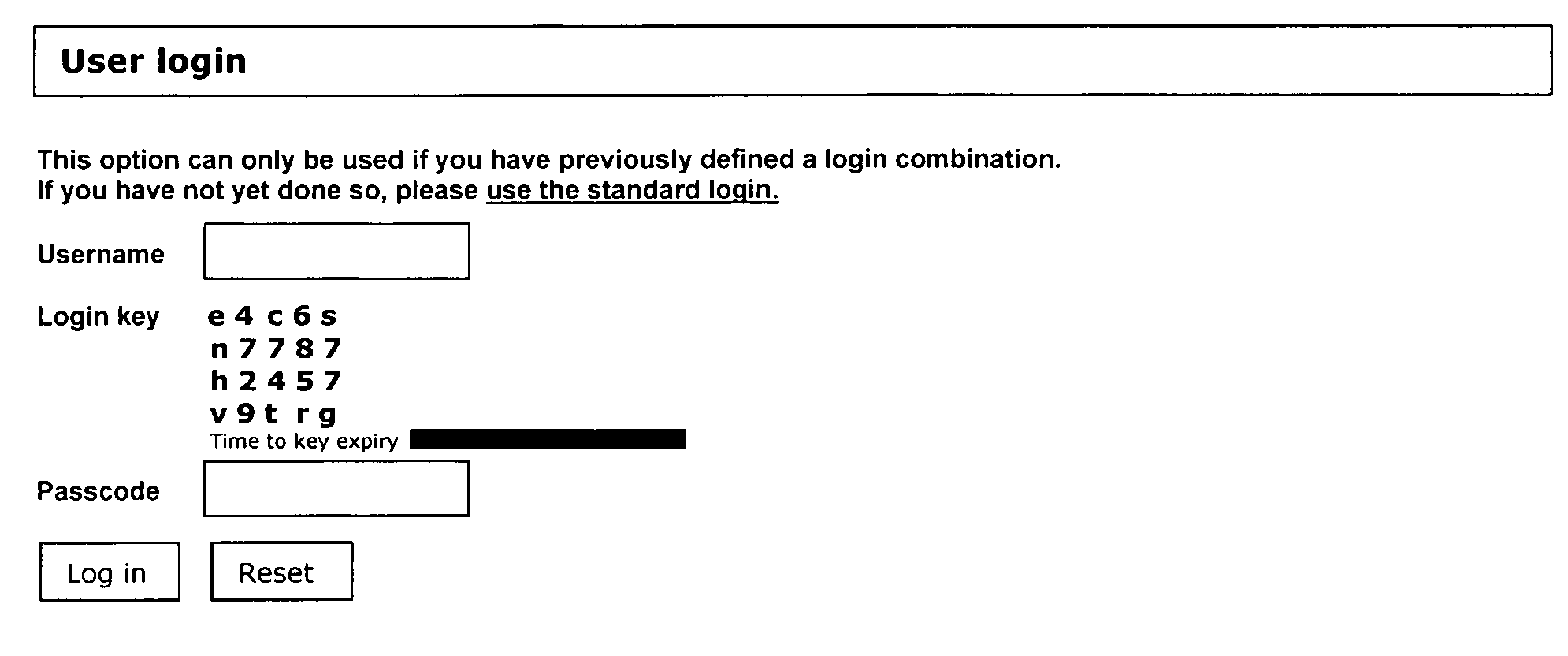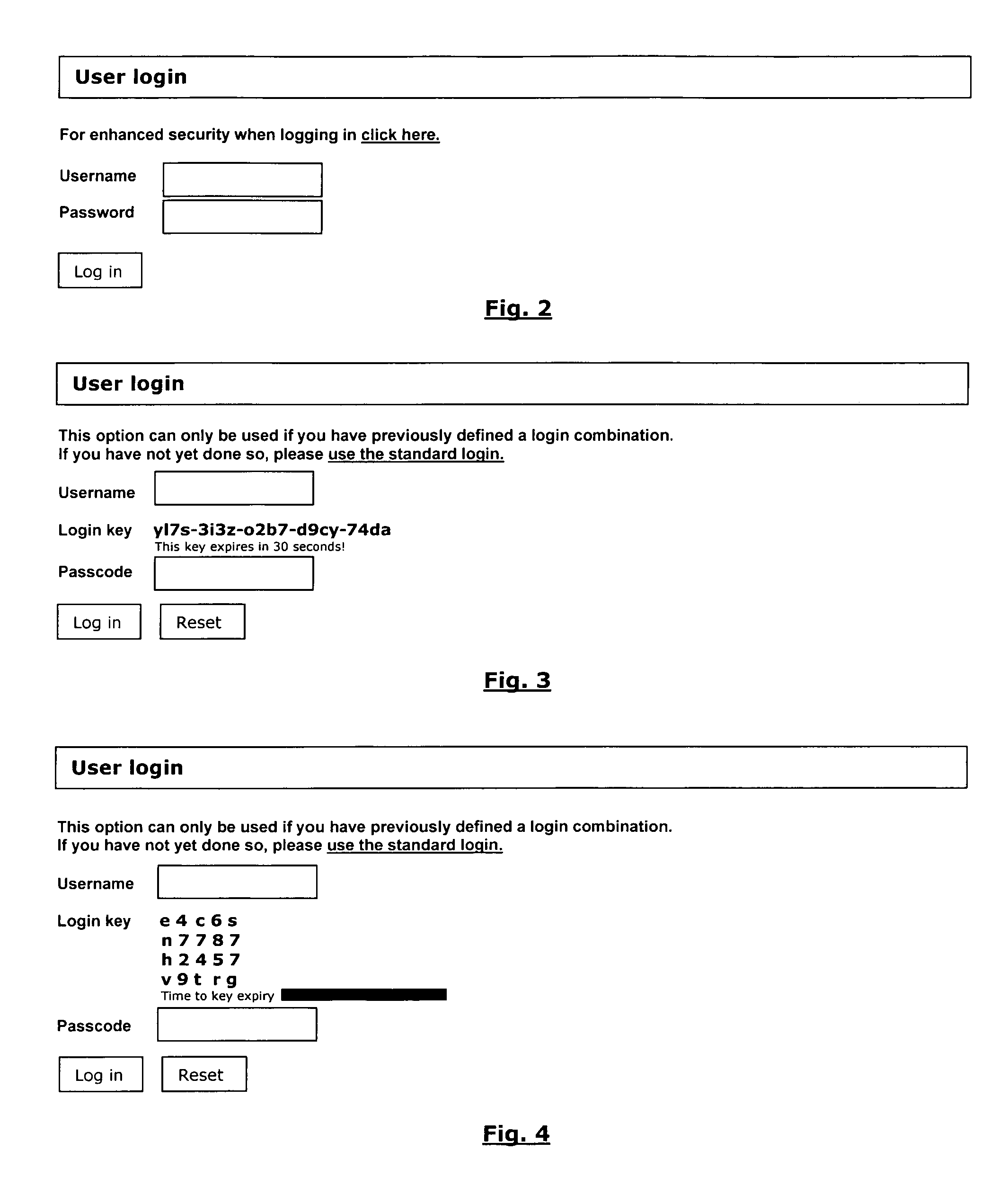Method and system for providing a secure login solution using one-time passwords
a one-time password and login solution technology, applied in the direction of unauthorized memory use protection, computer security arrangements, transmission, etc., can solve the problems of creating security vulnerabilities, sensitive information being vulnerable to attack, information traveling over the network may be intercepted by unauthorized individuals using network sniffers, etc., to achieve the effect of simple and elegan
- Summary
- Abstract
- Description
- Claims
- Application Information
AI Technical Summary
Benefits of technology
Problems solved by technology
Method used
Image
Examples
example
Login Procedure
[0053]The flow chart of the login procedure provided as FIG. 1 illustrates a process that could be used by an authenticating system. If the option of authenticating a user by a username / ID and a matching static, reusable password is available, the authenticating system would direct the user to a standard login page where the user can supply and submit this information. If the username / ID and the password match, the user is authenticated and allowed access, otherwise the user will be so advised and be requested to try again.
[0054]On the standard login page the user will also be given the opportunity to proceed to the enhanced security login page where a random login key is displayed. The user is requested to supply and submit his username / ID and a passcode created from the displayed login key and the user's previously defined login key combination. If the username / ID and the passcode generated from the supplied login key match, the user will be allowed access, otherwis...
PUM
 Login to View More
Login to View More Abstract
Description
Claims
Application Information
 Login to View More
Login to View More - R&D
- Intellectual Property
- Life Sciences
- Materials
- Tech Scout
- Unparalleled Data Quality
- Higher Quality Content
- 60% Fewer Hallucinations
Browse by: Latest US Patents, China's latest patents, Technical Efficacy Thesaurus, Application Domain, Technology Topic, Popular Technical Reports.
© 2025 PatSnap. All rights reserved.Legal|Privacy policy|Modern Slavery Act Transparency Statement|Sitemap|About US| Contact US: help@patsnap.com



